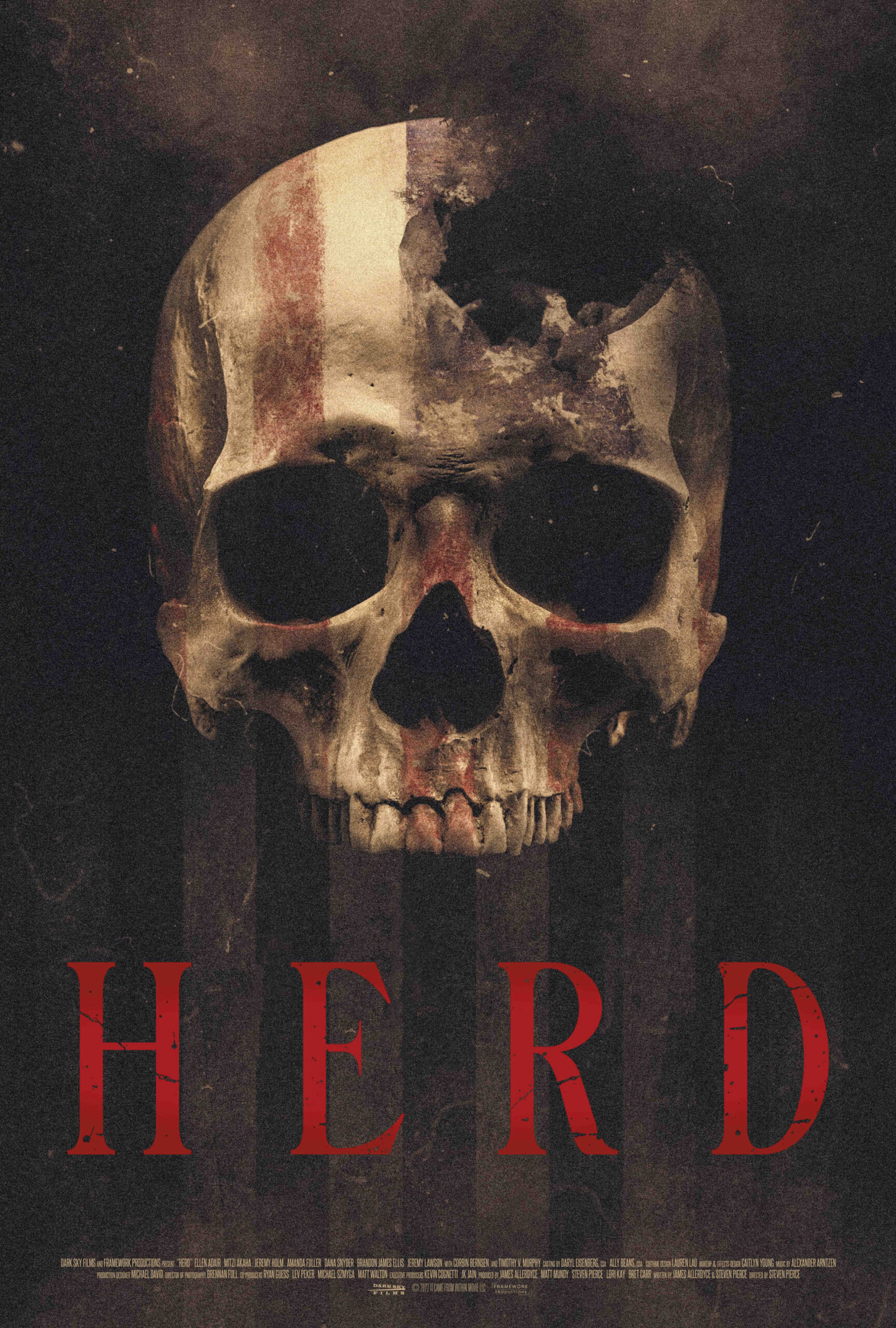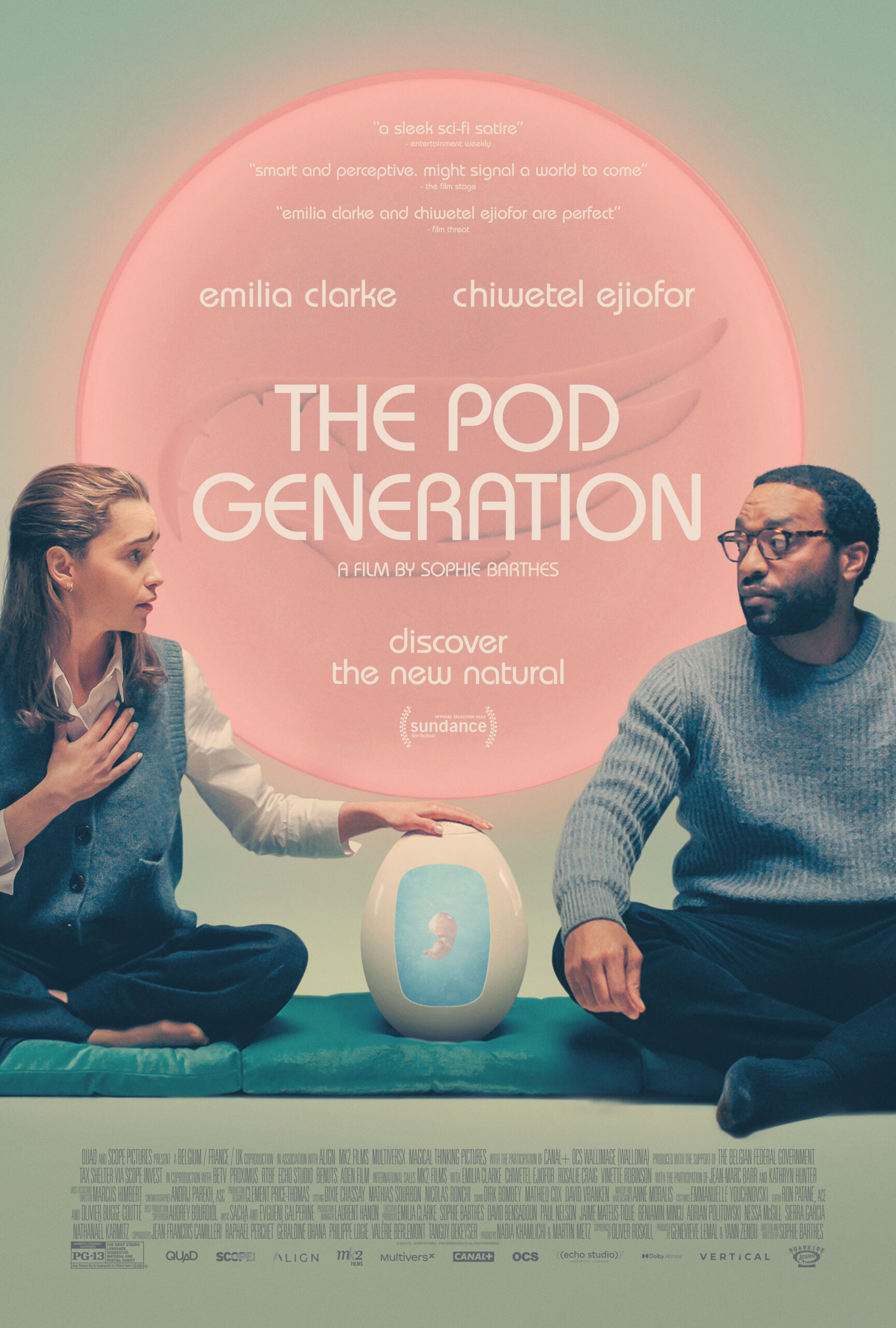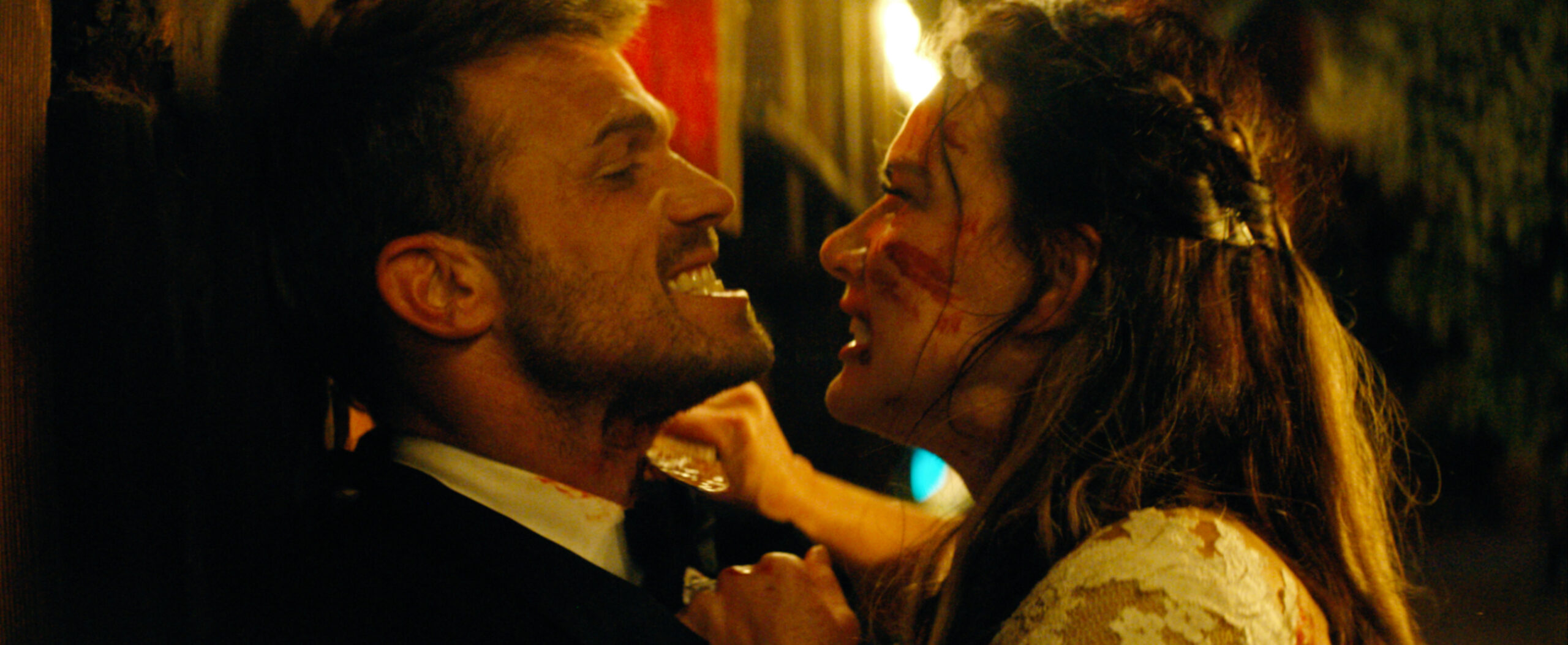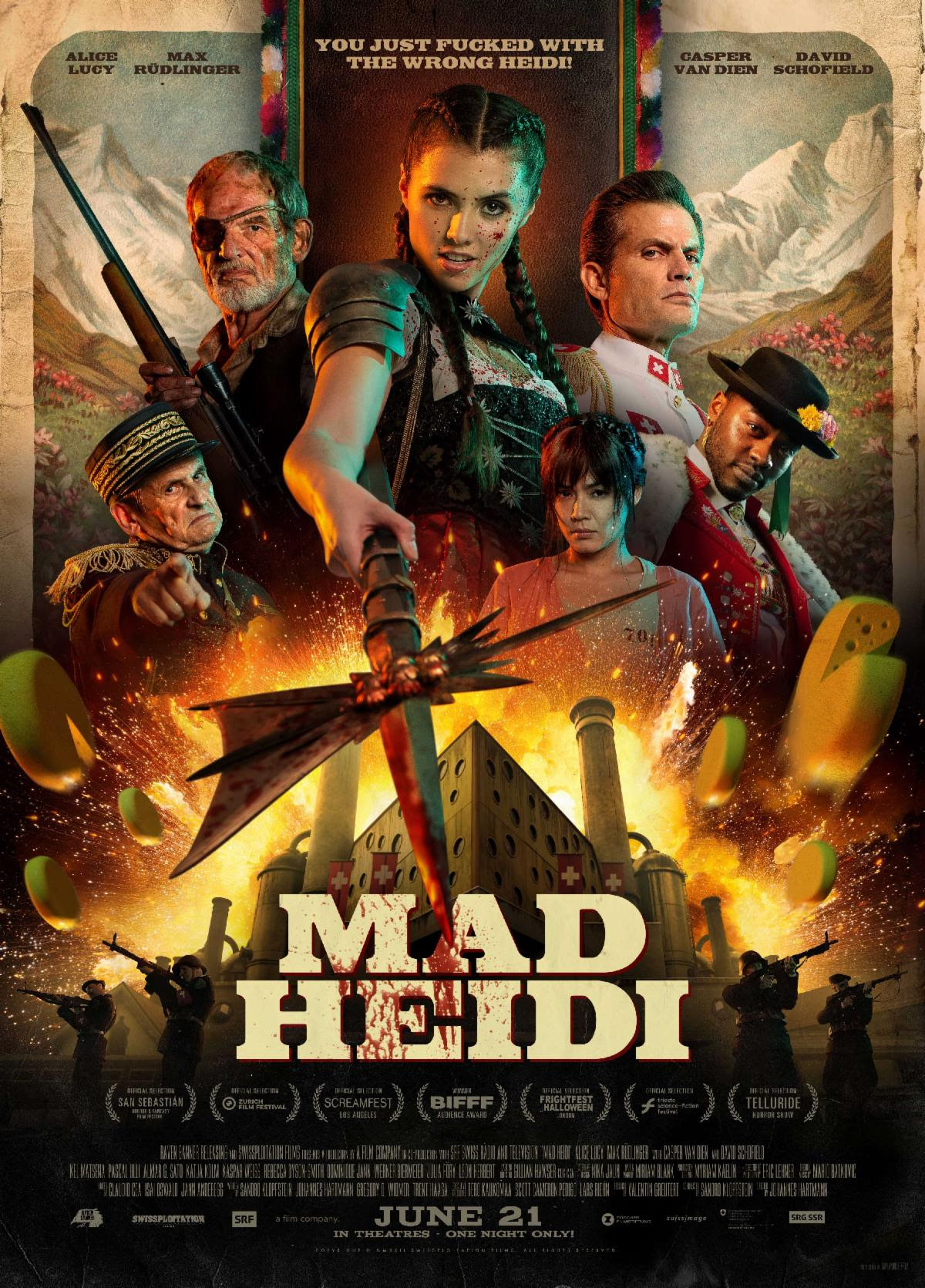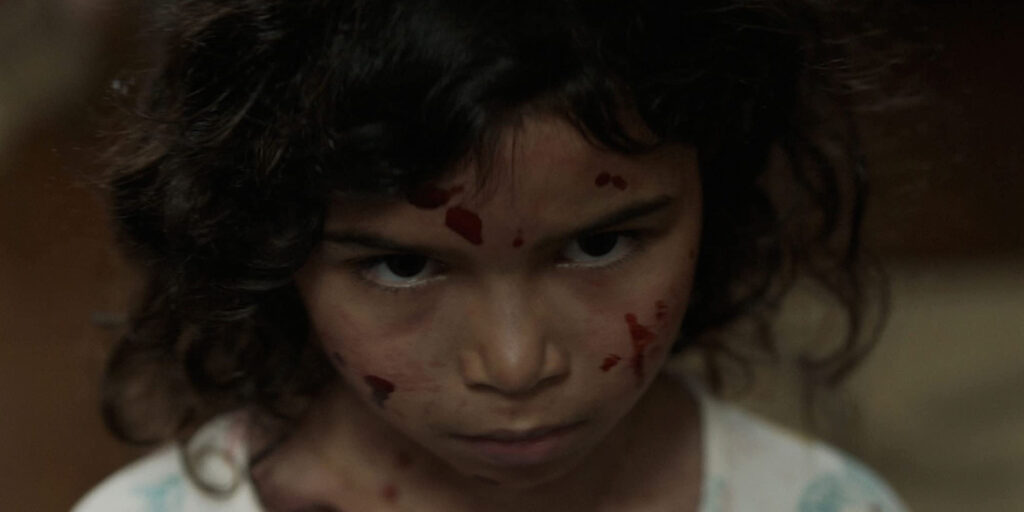Directed by: David Bruckner, Scott Derrickson, Gigi Saul Guerrero, Natasha Kermani and Mike Nelson
Rated: NR
Running Time: 110 minutes
Shudder
Our Score: 4 out of 5 Stars
Found footage has really hit its stride lately and that’s carrying over into one of the most unlikely ongoing franchises in the horror landscape, “V/H/S.” When the original came out in 2012, it didn’t necessarily light the world on fire, but since 2021, the “V/H/S” franchise has become a yearly tradition. 2021 saw the franchise become more chaotic as these movies became more memorable for breaking the mold and rules of found footage films. The latest addition, “V/H/S 85,” not only serves as an homage to the 80s, but finds the franchise tinkering with the clichés and found footage style once again with gloriously gory results.
The entire film plays like a dozen people recorded different things over the same VHS tape. The wraparound story, individual stories, are sometime interrupted by snippets of commercials that are so borderline realistic, I have to wonder if they’re from dead brands. “V/H/S 85” opens with our wrap around story, “Total Copy,” an “In Search Of…” and “Unsolved Mysteries” style TV show about a group of scientists studying a bizarre piece of intelligent life they name “Rufus.” The blobby shape-shifting creature is isolated in a room with American TV shows running 24/7. The idea, according to the scientists, is that the creature will eventually learn how to communicate with scientists, even though half the time the TV shows it appears to be watching are generic infomercials. Certainly, the wraparound story serves as a commentary on TV consumption, but we immediately know these scientists won’t have long to live if their idea of communicating with a suspicious lifeform is butt enhancing workout infomercials.
Busting out of the wraparound is “No Wake,” a tale of seven friends heading off to a lake for camping, swimming, drugs and sex. I immediately thought, “Oh, I’m about to watch an homage to an 80s slasher,” but once the blood squirts and the guts begin spilling, I really didn’t know what was happening or what was going to happen next, at all. The other interesting aspect to this short is that it kind of ends abruptly. Just as it’s about to hit its climax, it cuts to the next short. The conclusion to “No Wake” comes later in “V/H/S 85.” Without spoiling the set-up, you’ll be smiling ear-to-ear by the time “No Wake” wraps up its delightfully bonkers set-up.
After the camping trip to hell, we go south of the border to Mexico for “God of Death,” a bit of art mimicking life. The backdrop is the real-life 1985 Mexico City Earthquake, but the story opens before the quake in a news studio getting ready for one of its early morning reports. The earthquake hits and the staff are buried under rubble. Rescue workers show up to find that only a cameraman is left alive (of course). Their escape through the maze of rubble takes them down a path of blood, gore and coming face-to-face with the God of Death. As someone who’s never heard of this destructive event, I can’t help but think this short may be about how the God of Death, metaphorical or real in terms of government inaction, is just lying in wait for the next big one to kill thousands and thousands.
The next segment, “TKNOGD,” is difficult to describe because too much information kind of spoils the whole thing, but it feels very much like a punk rock avant garde art exhibit experimenting with technology. A performance artist is making a commentary on technology and God, something that oddly feels super relevant right now, before the predictable chaos and carnage of horror happens. It’s a short that still works like the previous ones because of its commentary, violent practical effects, and dark humor. It’s also the shortest of the entries, which is perfect for the story that it’s attempting to tell. It’s also a great lead-up to maybe one of the best shorts in “V/H/S” history.
“Dreamkill” is like an indie David Lynch teaming up with Wes Craven for a grisly and vicious tale. “Dreamkill” is about a police detective who keeps receiving VHS tapes showing a first-person view of violent murders, some of the more gruesome we’ve seen in the “V/H/S” series. The catch though, is that the murders happen days after the police detective receives them. He arrives on scene, already knowing how the killer got in, how he moved about and how he mutilated the victims, having watched the gonzo first-person footage. It’s one of those shorts that you could easily see becoming a full-length film, especially as we find out the person behind the footage and who the killer is. Even though I had a sneaking suspicion of who the killer was, I don’t think it took away from “Dreamkill” because of how everything unfolds. At times it’s very unsettling, dropping a bit of realism into the absurdity of it all. Like the killer’s knife, it’s likely to get under your skin.
Just like the previous installment, “V/H/S 99,” the found footage rules are broken left and right, but because of the unique choices that footage is incorporated into the overall product, it makes us forget some of the more nagging questions we might otherwise have. It’s really difficult to pinpoint a weakness in this anthology film. There’s always that one short that kind of sticks out like the ugly stepchild, but all the shorts in this work. I’m not sure if it’s because they all take place in 1985 or if one of the directors overlooked every product in an attempt to create a cohesive brutal vibe. If you’re a first timer to the anthology, or maybe stopped sometime after “V/H/S: Viral,” now is definitely the time to pick the franchise back-up. “V/H/S 85” is the best of the franchise; it’s a retro blast utilizing blood and guts to ingenious levels. It also stands to be one of the grittiest and best horror films of this year.




